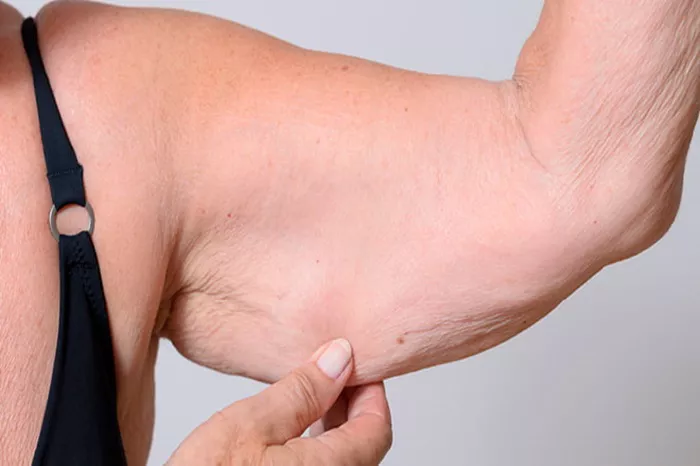Wrinkles on the skin of our arms can be a surprising and sometimes frustrating phenomenon. While wrinkles are often associated with aging, there are various factors beyond age that contribute to the appearance of wrinkles on our arms. In this article, we will explore five common reasons why the skin on your arms may be wrinkled, providing insights and strategies to help you understand and potentially mitigate these effects.
1. Aging and Natural Skin Changes
Aging is the most common reason for wrinkled skin, especially on the arms. As we grow older, our skin undergoes several changes:
Reduction in Collagen and Elastin: Collagen and elastin are proteins that provide structure and elasticity to the skin. With age, their production decreases, leading to thinner and less resilient skin. This loss of elasticity makes the skin more prone to wrinkles and sagging.
Decreased Oil Production: Sebaceous glands produce less oil as we age, leading to drier skin. Dry skin is more likely to develop fine lines and wrinkles. The arms, which are often exposed and less moisturized than other parts of the body, can show these effects prominently.
Thinning Epidermis: The outer layer of the skin, the epidermis, becomes thinner with age. This makes the skin more fragile and susceptible to damage, contributing to the appearance of wrinkles.
2. Sun Exposure and UV Damage
Sun exposure is a significant factor in the development of wrinkled skin. Ultraviolet (UV) rays from the sun can cause extensive damage to the skin:
Photoaging: Prolonged sun exposure accelerates the aging process of the skin, a phenomenon known as photoaging. UV rays break down collagen and elastin fibers, leading to sagging and wrinkling of the skin.
Hyperpigmentation and Age Spots: Sun exposure can cause uneven pigmentation and age spots, making wrinkles more noticeable. These dark spots can give the skin a mottled appearance.
DNA Damage: UV radiation can damage the DNA in skin cells, leading to mutations and premature aging. This damage is often irreversible and accumulates over time, making sun protection essential.
3. Lifestyle Factors and Habits
Several lifestyle factors can contribute to the development of wrinkled skin on the arms:
Smoking: Smoking accelerates the aging process of the skin. The chemicals in tobacco smoke reduce blood flow to the skin, depriving it of oxygen and essential nutrients. Smoking also damages collagen and elastin, leading to premature wrinkling.
Diet: A poor diet lacking in essential nutrients can affect skin health. Diets high in sugar and refined carbohydrates can lead to the breakdown of collagen, while insufficient intake of antioxidants can reduce the skin’s ability to repair itself.
Hydration: Proper hydration is crucial for maintaining skin elasticity. Dehydrated skin is more likely to develop fine lines and wrinkles. Drinking enough water and using moisturizing products can help maintain skin hydration.
See also: How To Get Rid Of Wrinkly Skin On Arms?
4. Environmental Factors and Pollution
Environmental factors, including pollution, can have a significant impact on skin health:
Pollutants: Exposure to environmental pollutants can lead to oxidative stress, which damages skin cells and accelerates aging. Pollutants can also cause inflammation and weaken the skin’s protective barrier, making it more prone to wrinkles.
Climate: Extreme weather conditions, such as excessive heat, cold, or humidity, can affect the skin. Dry and cold climates can strip the skin of its natural moisture, while excessive heat can lead to dehydration and damage from sweat and sun exposure.
5. Genetics and Hereditary Factors
Genetics play a crucial role in determining how our skin ages. Hereditary factors can influence:
Skin Type: Some people are genetically predisposed to have thinner or more sensitive skin, which can be more prone to wrinkling. Those with fair skin are often more susceptible to UV damage, leading to earlier signs of aging.
Aging Process: The rate at which your skin ages can be influenced by your genetic makeup. If your parents or grandparents developed wrinkles early, you might be more likely to experience the same.
Preventive Measures and Treatments
While some factors contributing to wrinkled skin are inevitable, there are several ways to prevent and treat it:
Sun Protection: Regular use of sunscreen with a high SPF can protect your skin from UV damage. Wearing protective clothing and seeking shade can also help.
Healthy Lifestyle: Maintaining a healthy lifestyle by not smoking, eating a balanced diet rich in antioxidants, and staying hydrated can improve skin health.
Skin Care Routine: Using moisturizers, retinoids, and other anti-aging products can help maintain skin elasticity and reduce the appearance of wrinkles. Regular exfoliation can also promote skin renewal.
Professional Treatments: Dermatological treatments such as chemical peels, laser therapy, and fillers can reduce the appearance of wrinkles. These treatments should be done under the guidance of a qualified professional.
Conclusion
Wrinkled skin on the arms can result from a combination of aging, sun exposure, lifestyle choices, environmental factors, and genetics. Understanding these causes can help you take preventive measures and seek appropriate treatments to maintain healthy, youthful skin. Embracing a comprehensive skincare routine and making informed lifestyle choices are key steps towards achieving smoother, more resilient skin on your arms.
Related topics:
How Can I Restore Collagen In My Face?
Top 5 Reasons Why My Palms Are So Wrinkled


